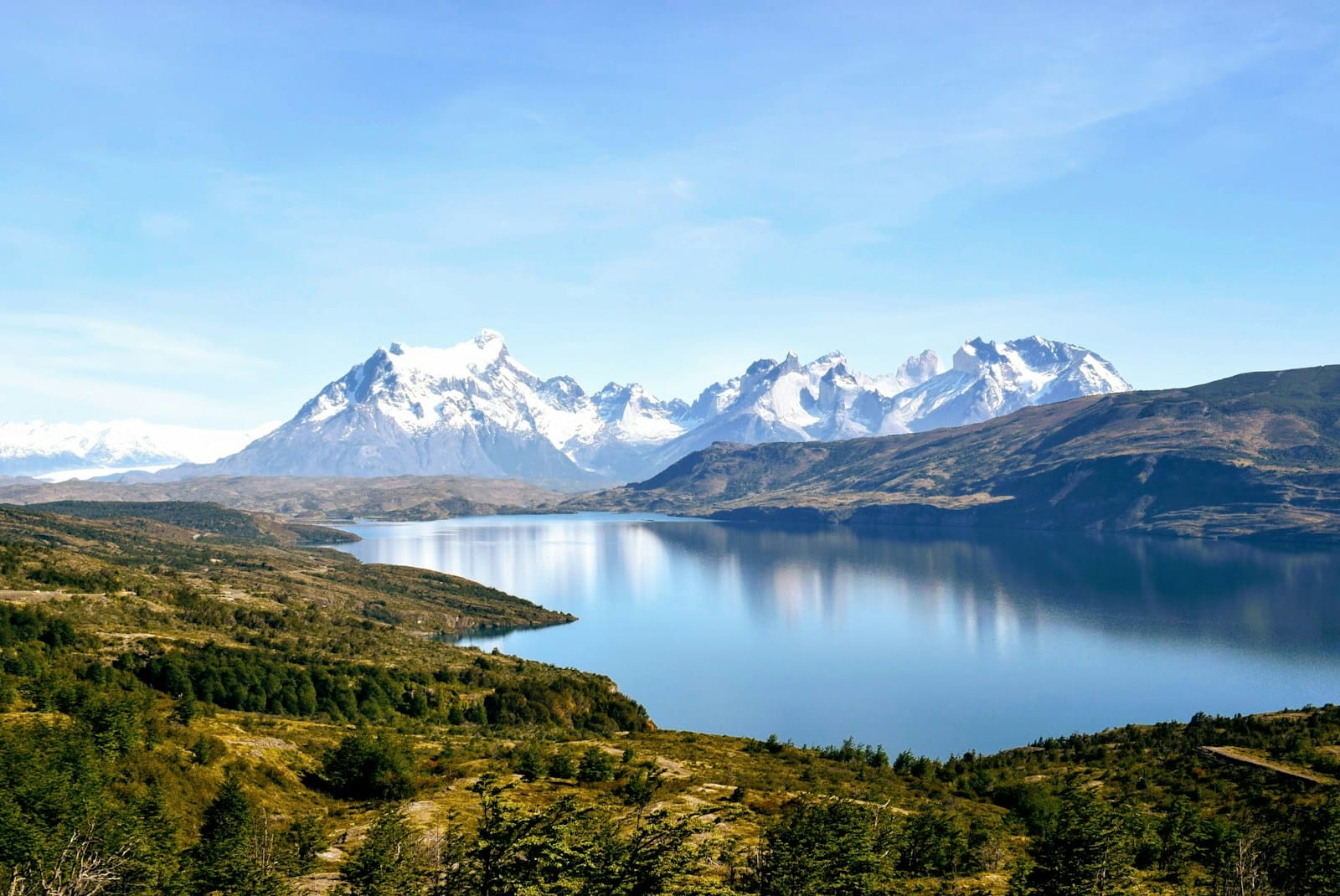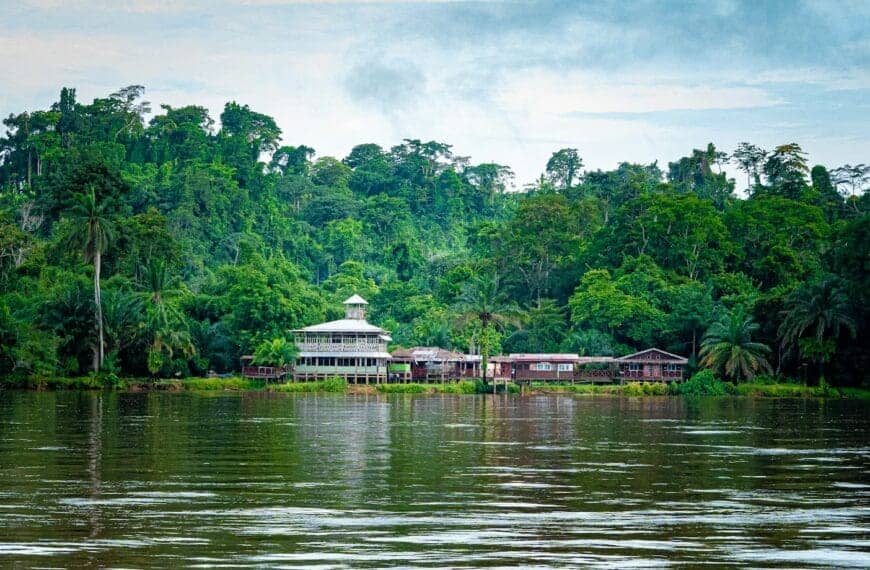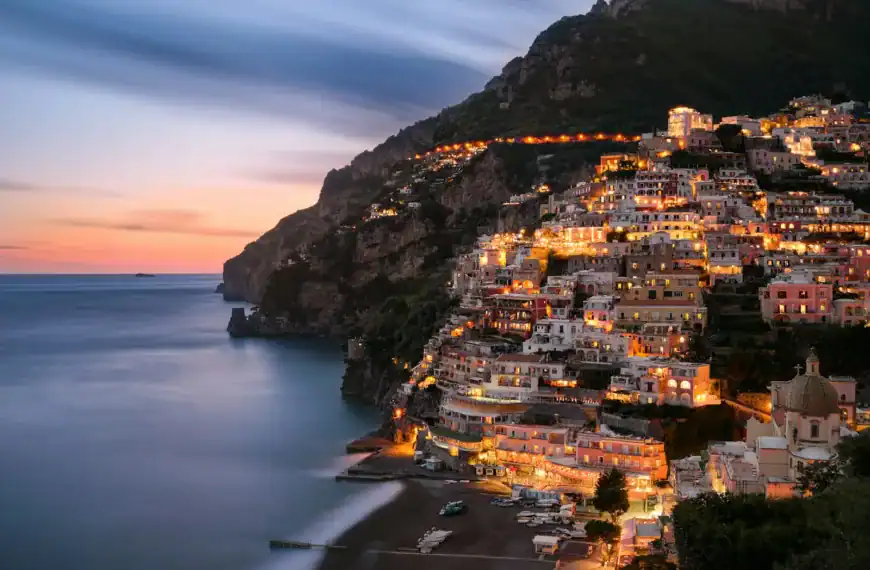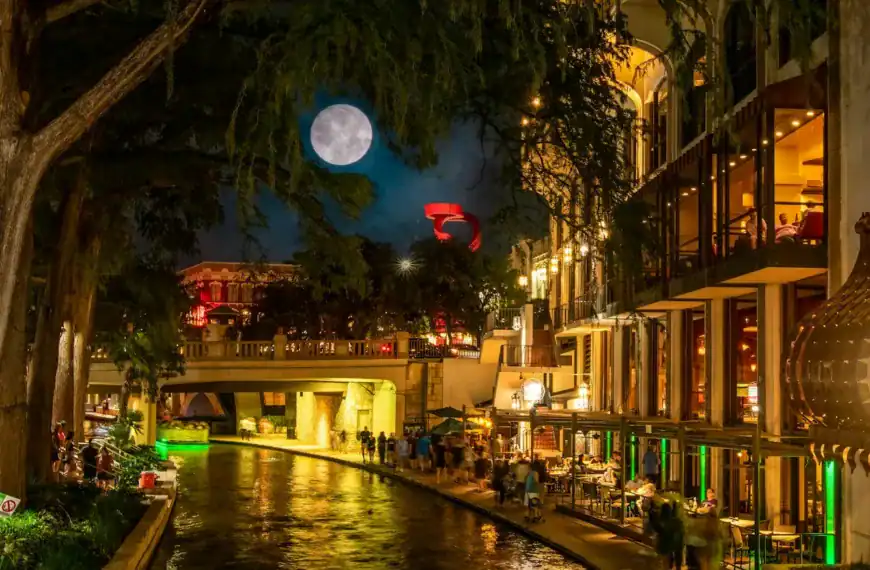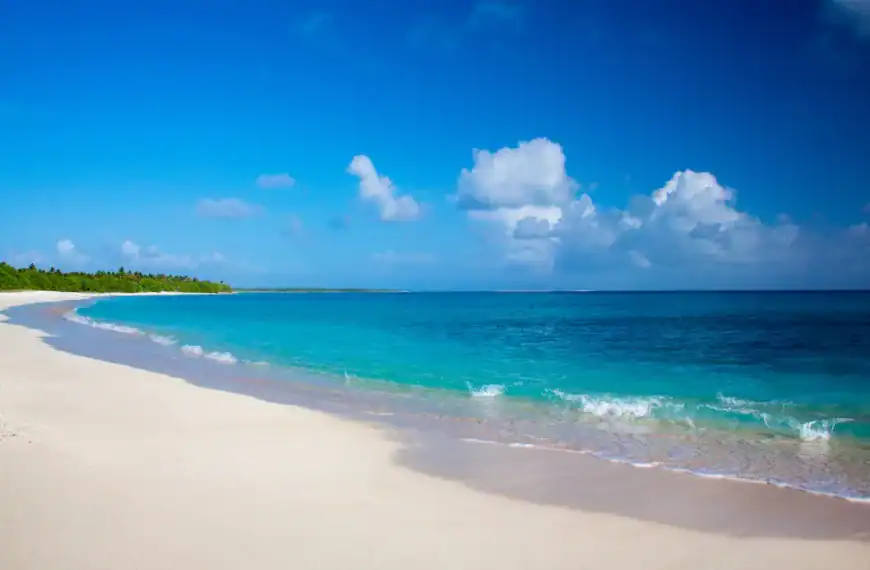Chile Travel Guide: From Desert Peaks to Patagonian Dreams
Intro to Chile Travel Guide
Stretching over 4,200 kilometers from the driest desert on Earth to icy fjords and glacier-carved peaks, Chile is a long, slender land of staggering diversity. Here, you can sandboard in Atacama dunes, hike through Patagonian valleys, sip wine under Andean skies, and stargaze in some of the clearest night skies on Earth — all in one unforgettable country.
Start planning your journey with our complete Chile Travel Guide — explore the best regions, cities, natural wonders, and cultural experiences from north to south across this breathtaking South American marvel.
Looking to dive in deeper? Explore top-rated Chile tours and discover the most exciting things to do in Chile.
Where to Go in Chile
Aisén Region | Antofagasta Region | Araucanía Region | Arica and Parinacota Region | Atacama Region | Bío Bío Region | Coquimbo Region | Los Lagos Region | Los Ríos Region | Magallanes and Chilean Antarctica Region | Maule Region | Ñuble Region | O’Higgins Region | Santiago Metropolitan Region | Tarapacá Region | Valparaíso Region
💡Quick Facts:
Destination: Chile
Continent: South America
Country: Republic of Chile
Administrative Division: 16 regions (e.g., Región Metropolitana, Valparaíso, Magallanes)
City: Santiago (capital city)
Area: 756,102 km² (291,930 mi²)
Population: ~19.9 million (2024 est.)
Density: ~26 people/km²
Capital: Santiago
Regions/Subregions:
• Santiago Metropolitan Region
• Valparaíso Region
• Atacama Desert
• Lake District (Los Lagos)
• Patagonia (Aysén and Magallanes)
• Easter Island (Rapa Nui)
Official & Regional Languages: Spanish (official), Mapudungun, Rapa Nui
Currency: Chilean Peso (CLP)
Time Zone(s): GMT-4 (Mainland), GMT-6 (Magallanes & Antarctica), GMT-5 (Easter Island)
Airports: Arturo Merino Benítez International (SCL), El Tepual (PMC), Mataveri (IPC)
Climate: Mediterranean in central regions, desert in the north, oceanic in the south, polar in the far south
Known For: Andes Mountains, Atacama Desert, Torres del Paine, Easter Island moai statues, Chilean wine regions, Patagonia glaciers
🛂Arrival Info:
• Visa-free access for over 90 countries (up to 90 days stay)
• eVisa available for select nationalities
• Reciprocity fee applies to certain countries (check before travel)
• Official Visa Portal: Chile Immigration
• Customs Info: Aduana Chile
💉Health Info:
• Recommended Vaccines: Hepatitis A, Typhoid (for rural travel), Yellow Fever if visiting Amazon basin (transit areas)
• No malaria risk
• Dengue risk in Easter Island during rainy season
• High-quality hospitals in Santiago, Valparaíso, and major cities
• Emergency medical services in remote Patagonia areas are limited
✅ Check travel insurance options for travel emergencies, delays, and medical needs abroad — Get coverage here
✅ Stay Informed with Official Updates: WHO – International Travel & Health | CDC – Travel health updates
🚨Travel Advisory:
• U.S. State Dept Level 2: Exercise Increased Caution
• Petty crime (pickpocketing, scams) in urban areas like Santiago, Valparaíso
• Protests may disrupt transport in major cities
• Natural hazards: earthquakes, volcanic activity in certain zones
• Emergency contacts: Police (133), Fire (132), Medical (131)
✅ Stay Informed with Official Updates: US Travel Advisory | UK Foreign Travel Advice
📅Holidays:
• Independence Day (Fiestas Patrias) — September 18–19
• New Year’s Eve Fireworks (Valparaíso, December 31)
• Day of the Glories of the Army — September 19
• Easter Island Tapati Festival — February (cultural celebration)
• Holy Week (Semana Santa) — Easter-related holidays
💰Visitor Info:
• Currency: Chilean Peso (CLP)
• Currency exchange widely available in cities; ATMs accessible in urban and tourist areas
• Credit card usage widespread; cash preferred in remote regions
• Tipping customary: 10% in restaurants, guides and porters expected
• Duty-free allowances: 400 cigarettes, 2.5 liters of alcohol
• Average Daily Budget: Budget $60–100, Midrange $150–250, Luxury $300+
✈️Airports:
• Arturo Merino Benítez International Airport (SCL), Santiago — main international hub
• El Tepual Airport (PMC), Puerto Montt — gateway to Lake District
• Mataveri International Airport (IPC), Easter Island — remote access point
• Other airports: Punta Arenas (PUQ), Antofagasta (ANF), La Serena (LSC)
• LATAM Chile is the national carrier
✅ Delayed or canceled flight? Check if you’re eligible for compensation
🚍Transport:
• Extensive intercity bus network (TurBus, Pullman Bus)
• Metro systems in Santiago and Valparaíso
• Domestic flights popular for long distances (Patagonia, Atacama, Easter Island)
• Car rentals available; driving on the right side
• Ride-hailing apps: Uber, Cabify in major cities
• Colectivos (shared taxis) used for short routes within cities
✅ Book reliable airport transfers and in-city rides in advance. Reserve your ride here
📶Connectivity:
• SIM cards from Entel, Movistar, WOM, Claro
• Strong 4G/5G coverage in urban areas; weak signal in remote Patagonia and Atacama
• Free public Wi-Fi in airports, city centers, and shopping malls
• Roaming services available; local SIM/eSIM preferred for data
✅ Stay connected abroad with affordable eSIM data packs. Get your eSIM here
📜Laws & Etiquette:
• Legal drinking age: 18
• Public drinking laws enforced; fines for open alcohol in public spaces
• LGBTQ+ rights protected; Pride events in Santiago
• Tipping is expected in service industries
• Photography restrictions in military zones, indigenous ceremonial sites require respect
🛡️Emergency Info:
• Emergency Numbers: Police (133), Fire (132), Ambulance (131)
• Embassies and consulates in Santiago
• Tourist police presence in key tourist zones (SERNATUR assistance centers)
• Chilean Red Cross and local traveler helplines in major regions
✅ Use embassy locator tools: Embassies Worldwide
🌦️Weather:
• Central Chile (Santiago, Valparaíso): Mediterranean climate, dry summers, wet winters
• Atacama Desert: Driest desert on Earth, cool nights, minimal rainfall
• Patagonia: Cold, windy, with frequent rain; best visited in summer (Dec–Feb)
• Easter Island: Subtropical, year-round mild temperatures
• Best travel season: October–April depending on region (Patagonia in summer, Atacama year-round)
✅ Stay prepared—check the weather forecast for your destination — Weather Forecast
Chile by Region – Where to Go
Northern Chile – Atacama & Beyond
- San Pedro de Atacama: A surreal desert hub with salt flats, geysers, lunar valleys, and starry skies. Day trips lead to high-altitude lagoons and the Tatio Geysers.
- Arica & Iquique: Surf towns with colonial charm and desert backdrops. Iquique offers sandboarding on giant dunes, while Arica is a gateway to the high Andean plateau.
- Altiplano & Lauca National Park: Llamas, volcanoes, and mirror-like lakes await near the Bolivian border — perfect for 4×4 adventures.
Central Chile – Cities, Wine, & Coastline
- Santiago: The capital blends modernity with heritage, framed by the Andes. Visit markets, museums, and sky-high viewpoints, or take day trips to vineyards and mountains.
- Valparaíso: A colorful, bohemian coastal city with steep hills, street art, and funiculars. A UNESCO World Heritage Site known for its poetic soul.
- Viña del Mar: The “Garden City” is a beachside resort known for gardens, casinos, and music festivals.
- Casablanca & Maipo Valleys: Wine lovers’ havens offering tastings of world-class Carménère, Cabernet, and Sauvignon Blanc.
Southern Chile – Lakes & Forests
- Chillán & Concepción: Lush valleys, thermal springs, and ski resorts define this transition zone between central Chile and Patagonia.
- Lake District (Llanquihue, Pucón, Villarrica): Volcanoes, alpine lakes, German-influenced towns, and endless outdoor adventures.
- Chiloé Island: A mystical land of wooden churches, palafito houses, foggy coastlines, and unique mythology.
Patagonia – Chile’s Wild South
- Carretera Austral: One of the world’s most remote and scenic drives, dotted with turquoise rivers, hanging glaciers, and tiny towns.
- Torres del Paine National Park: Chile’s crown jewel for trekking and wildlife. Iconic granite peaks, glaciers, guanacos, and epic landscapes.
- Puerto Natales & Punta Arenas: Starting points for Patagonia adventures, penguin colonies, and even Antarctic cruises.
Isolated Chile – Off the Mainland
- Easter Island (Rapa Nui): Mysterious moai statues, Polynesian culture, and wild coastal cliffs. A remote and spiritual destination.
- Juan Fernández Archipelago: A Robinson Crusoe-like escape with rugged coastlines and endemic wildlife, accessible by plane from Santiago.
Top Places to Visit in Chile
Natural Wonders
- Atacama Desert: Mars-like valleys, salt flats, and stargazing.
- Torres del Paine: Chile’s most iconic national park for hiking and scenery.
- Lauca National Park: Flamingos, volcanoes, and high-altitude lakes.
Urban & Cultural Hubs
- Santiago: Trendy neighborhoods, Andean backdrops, and cultural centers.
- Valparaíso: Art, poetry, and historical architecture by the sea.
- Puerto Varas: German architecture and lakeside vibes in the south.
Adventure Destinations
- Pucón: Adventure capital for volcano climbs, rafting, and hot springs.
- Coyhaique & Futaleufú: Remote rivers and forests perfect for fly fishing and rafting.
- Easter Island: A mysterious open-air museum of ancient stone giants.
How to Choose Where to Go in Chile
For desert and space-like landscapes, head north to Atacama. Want beaches and cities? Santiago, Valparaíso, and Viña del Mar make a great trio.
If you love forests, lakes, and volcanoes, go south to the Lake District. For hiking and raw nature, Patagonia offers some of the best trekking in the world.
Short on time? Choose either a northbound route (Atacama + Santiago) or southbound journey (Santiago + Lake District or Patagonia).
How to Get Around Chile
- Domestic flights are essential for long-distance travel (e.g., Santiago to Calama or Punta Arenas).
- Long-distance buses are comfortable and widespread — ideal for budget travel.
- Renting a car is excellent for the Lake District or Carretera Austral.
- In cities, use the metro (Santiago), ride-hailing apps, or colectivos (shared taxis).
Chile’s infrastructure is modern, and travel is safe and straightforward despite its massive north-south scale.
Travel Budget & Costs in Chile
Chile is a mid-range to high-range destination by South American standards.
Daily Budget Estimates:
- Budget: $50–$75/day (hostels, buses, local meals)
- Mid-range: $90–$160/day (hotels, domestic flights, day tours)
- Luxury: $200–$400/day (boutique stays, Patagonia lodges, private guides)
Sample Prices:
- Intercity bus: $20–$60
- Domestic flight: $60–$200
- Hostel dorm: $15–$30
- Hotel room: $70–$150
- Torres del Paine park fee: ~$35
Plan ahead for Patagonia and Easter Island, where prices rise quickly.
Best Time to Visit Chile
- North (Atacama): Year-round travel is possible. Nights are chilly, days dry and sunny.
- Central Chile: Visit September–April for wine harvests, beaches, and festivals.
- Lake District: December–March (summer) is best for hiking and water activities.
- Patagonia: Prime season is November to March, though late October and April can be quieter and still accessible.
- Easter Island: Year-round access, but avoid rainy May–August for best hiking and photography.
Must-See Experiences in Chile
- Stargaze in Atacama: Peer into the galaxy from high desert observatories.
- Hike the W or O Circuit in Torres del Paine: Glacier fields, blue lakes, and jagged peaks.
- Ride a funicular in Valparaíso: Then wander past colorful murals and cafés.
- Explore Chiloé Island by ferry: Visit wooden churches, sample curanto, and spot pudús (miniature deer).
- Soak in natural hot springs: Near Pucón, Termas Geométricas offers forested pools beneath waterfalls.
- Drive the Carretera Austral: Camp beside rivers, cross hanging bridges, and meet gauchos in the far south.
- Uncover the mystery of moai: Roam the windswept volcanic plains of Easter Island.
Book immersive Chile tours and experience unforgettable things to do in Chile — from desert stargazing and glacial treks to island mysteries and volcanic adventures.
Best Travel Itineraries in Chile
7-Day Desert + City Combo
- Days 1–3: Atacama (Valle de la Luna, geysers, stargazing)
- Days 4–7: Santiago + Valparaíso day trip
10-Day Lakes & Volcanoes Loop
- Santiago → Temuco → Pucón → Puerto Varas → Chiloé → Return
14-Day Patagonia Explorer
- Fly to Punta Arenas → Torres del Paine trek (5 days) → Puerto Natales → Optional fly-cruise to Navarino or Antarctic gateway
Easter Island Add-On (4–5 days)
- Combine with Santiago before or after mainland adventures.
Local Cuisine & Culinary Experiences
- Empanadas de pino: Savory pastries filled with meat, onions, and olives.
- Curanto (Chiloé): A traditional pit-steamed seafood and meat feast.
- Cazuela: Hearty stew with meat, corn, and squash — comforting and common.
- Pastel de choclo: A layered corn and beef pie with sweet and savory notes.
- King crab (centolla): Especially good in Patagonia and Punta Arenas.
- Mote con huesillo: A sweet drink/snack with dried peaches and barley — Chilean summer staple.
- Chilean wine tours: Visit Casablanca, Colchagua, or Maipo valleys for tastings.
Food markets, seaside ceviche stalls, and fine dining in Santiago make Chile a rising culinary destination.
Travel Safety & Cultural Etiquette in Chile
Safety Tips:
- Chile is one of Latin America’s safest countries, but watch for pickpockets in cities.
- In nature areas, follow park regulations — Patagonia is remote and wild.
- Carry cash in small towns, though cards are widely accepted in cities.
Etiquette:
- Greet with a handshake or cheek kiss.
- Respect indigenous communities and sites, especially on Easter Island and in the north.
- Tipping: 10% in restaurants is customary.
- Public smoking laws are strict; obey signs.
Where to Go Next – Pair Chile with These Destinations
- Argentina: Easily combine Patagonia, wine country (Mendoza), or Buenos Aires via overland routes or short flights.
- Bolivia: Cross into the Uyuni Salt Flats from San Pedro de Atacama.
- Peru: Link with Cusco and Machu Picchu for a rich cultural circuit.
- Antarctica: Punta Arenas serves as a launch point for expedition cruises.
Explore more:
Argentina Travel Guide | Bolivia Travel Guide | Peru Travel Guide | South America Travel Guide
Final Planning Checklist for Chile
- Book domestic flights early for Patagonia or Atacama
- Reserve park permits and trekking camps for Torres del Paine
- Download maps and offline translation apps (Spanish widely spoken)
- Get travel insurance that covers adventure sports or altitude
- Pack layers — climate varies drastically between regions
- Confirm visa requirements (many nationalities have visa-free entry)
- Bring sunscreen, sunglasses, and hydration packs for desert travel
- Respect altitude in Atacama and Lauca — ascend gradually
Explore Chile with confidence using our trusted tips, local insights, and region-by-region planning tools.
For more expert travel tips, practical strategies, and trusted tools — visit our Homepage and get inspired for your next trip.

